Since 1995 there have been four generations of Renault Mégane, which is why it is somewhat surprising that the French brand has “repeated” the name for an entirely new, electric car: the Megane E-Tech Electric.
This is because it will generate some confusion with the hybrid Mégane (also called E-Tech) and gasoline that will continue to be sold until 2024, with completely different price positions (in some cases you will be able to buy two of the "old" ones for the price of a new 100% electric).
Not to mention that they are totally different vehicles, both in content and in form. But it is the president of Renault, Luca De Meo, who explains to me that “the name Mégane is very strong and it is more expensive to invest in a new name enough for it to reach the point of notoriety of a good old name”.
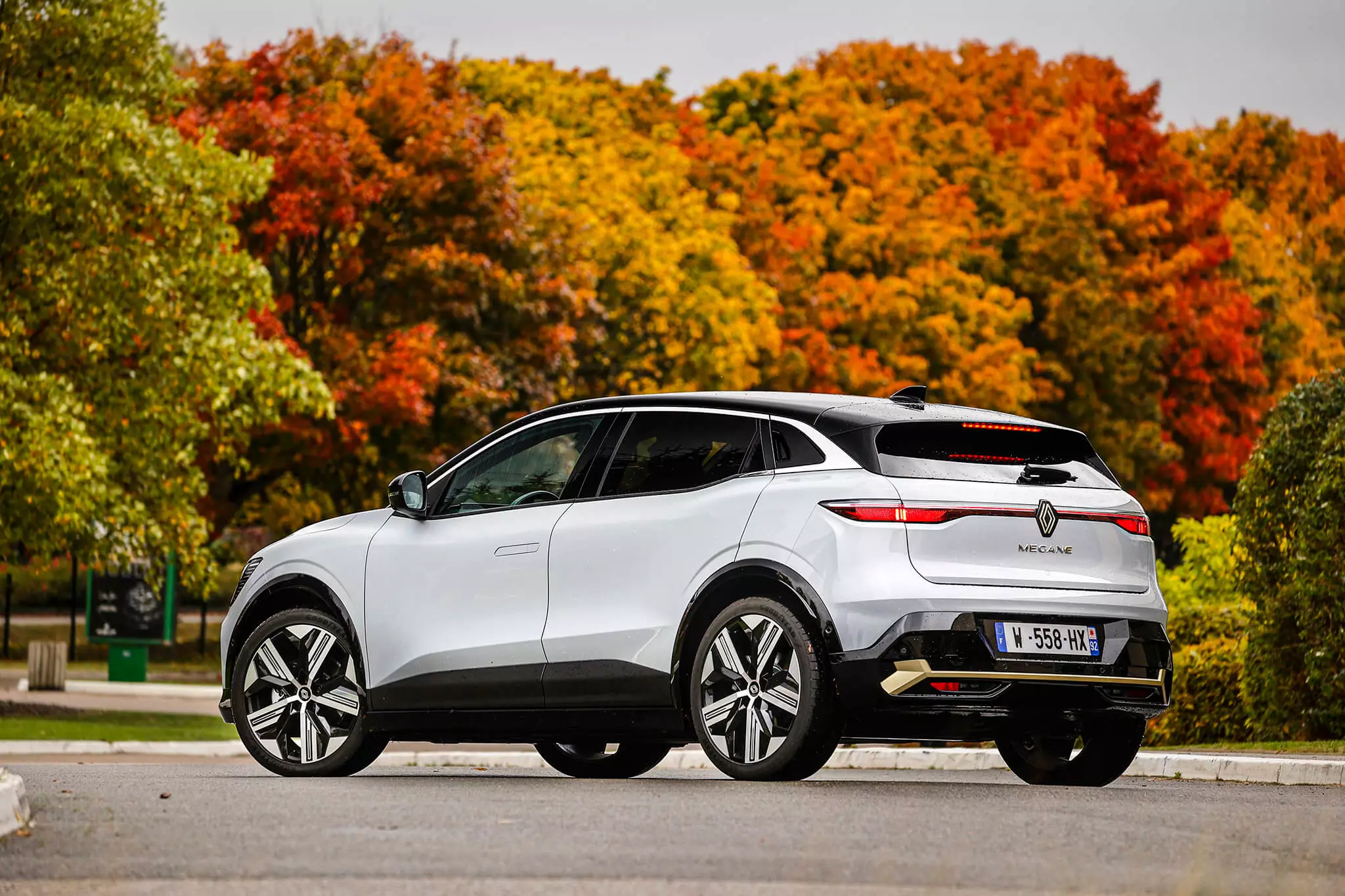
Hatchback? Surely?
The design of the new Mégane E-Tech Electric is one of its strong points, betting on features that gain the approval of many potential customers, such as the high beltline, reduced side windows and rear window, and high bodywork.
I dare to venture to say that if Renault considers this new Mégane a hatchback (the typical two-volume), not cataloging it as a much more "fashionable" crossover or SUV, it is because it will be preparing something in this field, probably one of the 14 new electric models scheduled until 2025.
The height increases by 6.2 cm compared to the current Renault Mégane, but the length decreases by 14.9 cm, the width shrinks by 3.4 cm and the wheelbase is increased by 3.0 cm.
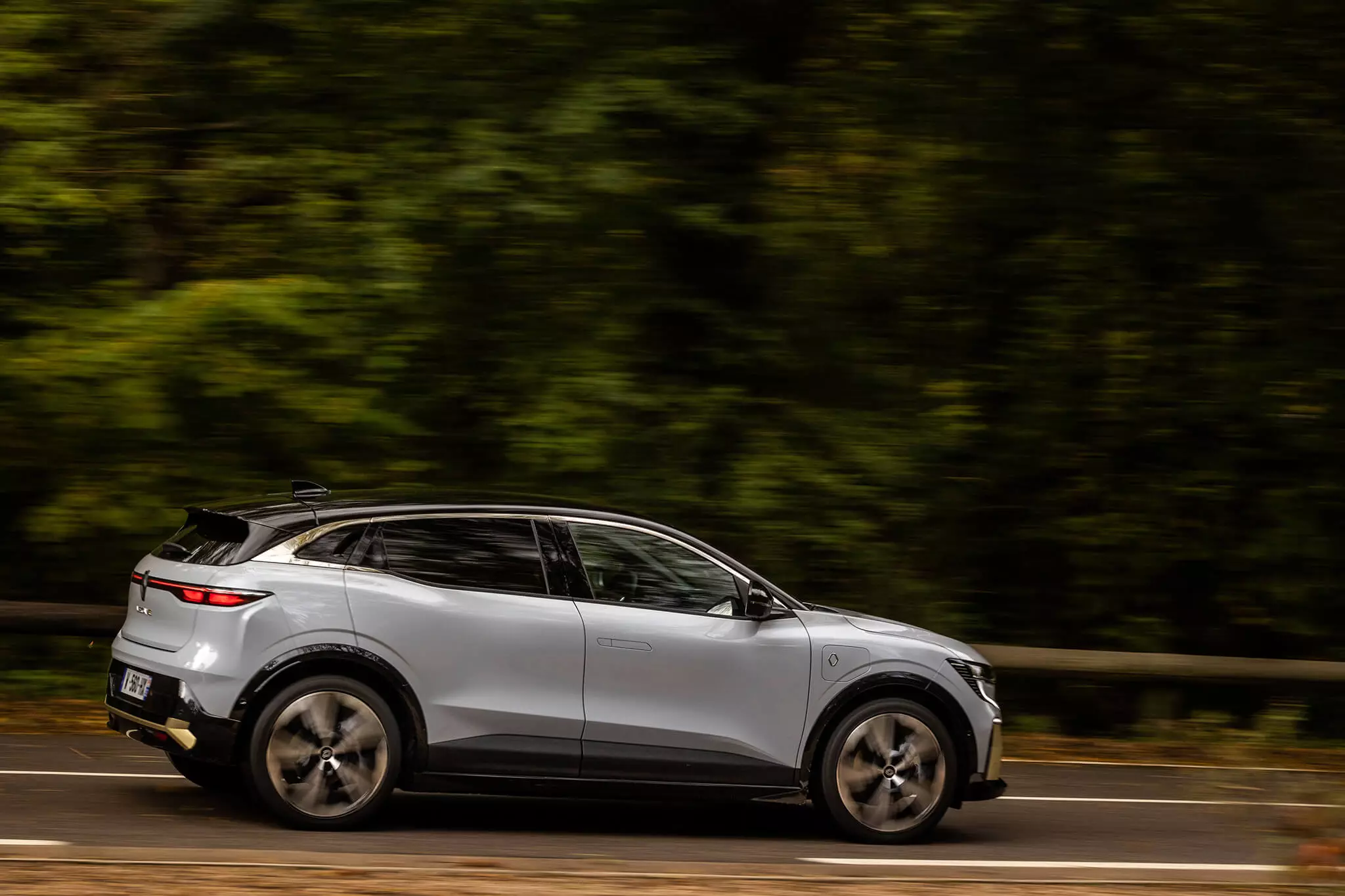
In other words, the wheels approached the extremes of the bodywork, as is usual in electric cars, which are generally smaller on the outside and larger on the inside than their combustion-engined counterparts.
The roof can be painted in a different color from the rest of the bodywork and there is no option for a sunroof or panoramic. Attention is also drawn to the luminous connection between the taillights and the golden finish under the front lamps, in the latter case a more debatable stylistic option, as well as the recessed door handles and those with the rear concealed in the dark area at the top next to the surface. glazed.
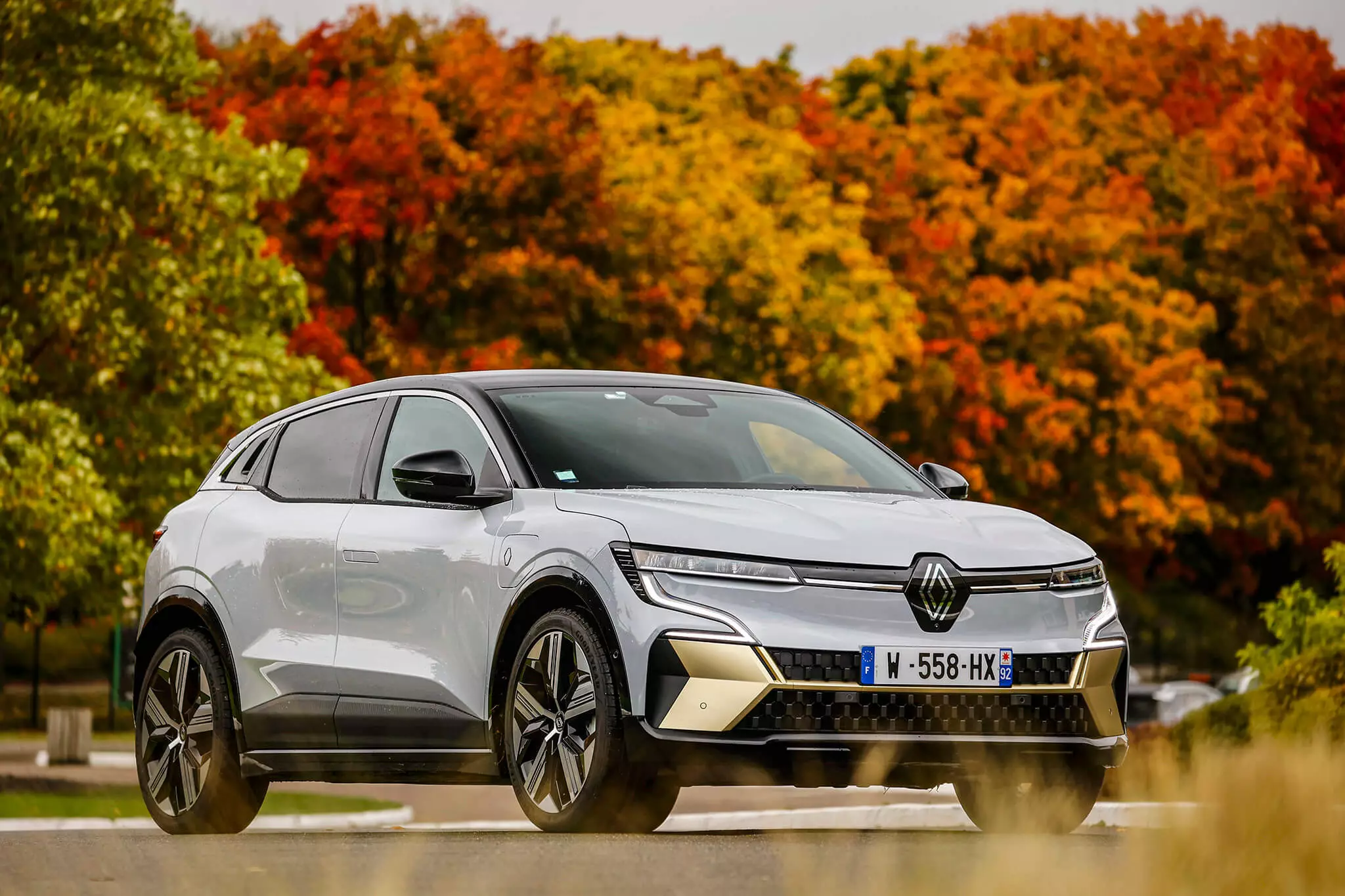
A new digital world from Renault
The interior is quite “breezy” and the placement of the driving modes button and gear selector being moved to the steering wheel has further freed up the area between driver and front passenger.
The instrumentation's digital screen is bigger than the infotainment center: the first has 12" (four views to choose from: Driving, Navigation, Zen or Drums) and the second has 9.3" (which can go up to 12" in the versions equipped). It is tactile, mounted vertically and directed towards the driver.
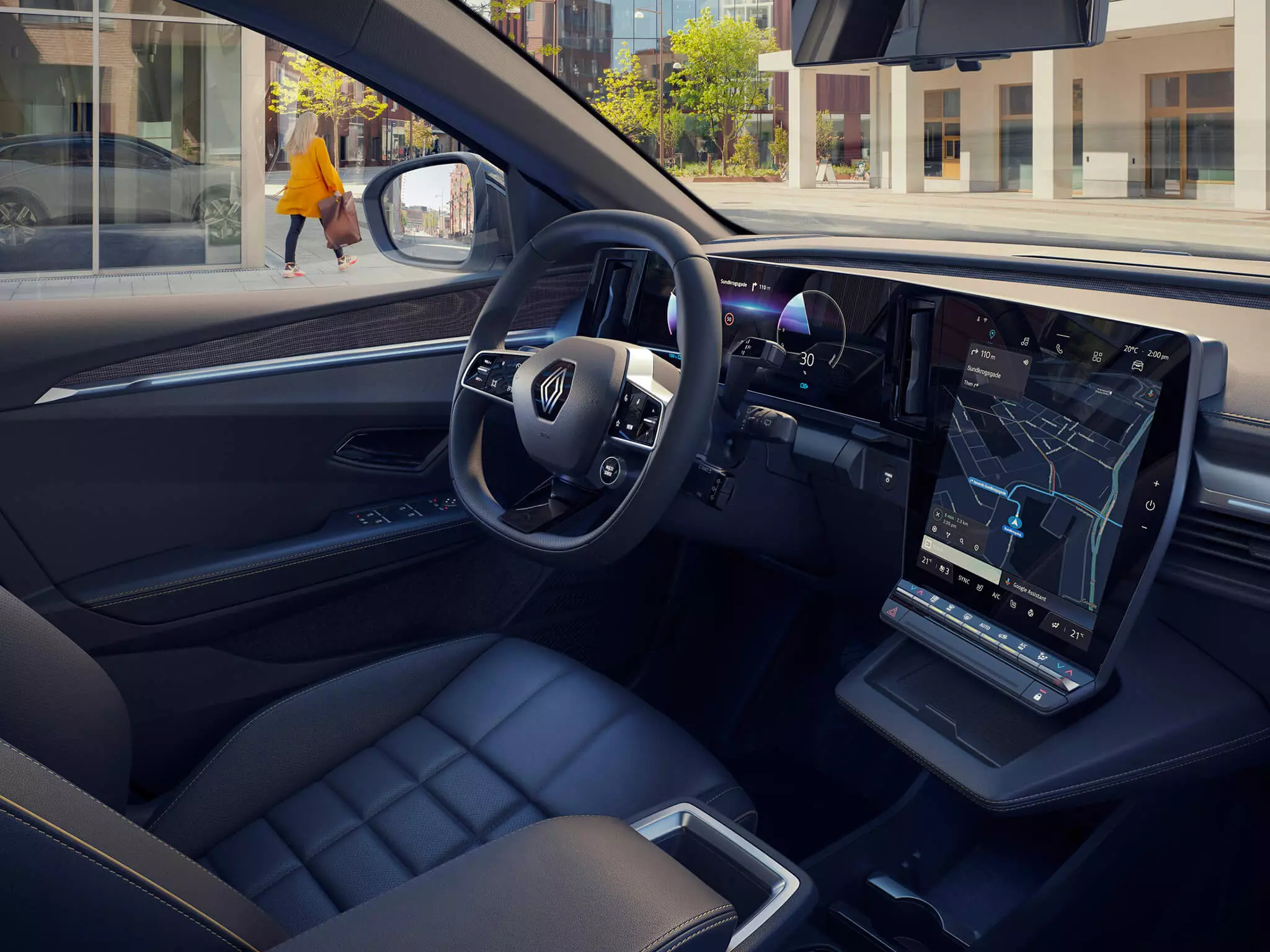
The old-fashioned satellite rod to control the audio, fixed to the steering column, is anachronistic in the context of the modern interior, in the same way that the lack of a head-up display and the poor rear vision due to the minimal rear window deserve attention ( there is the option of installing an interior mirror with an image collected by a rear camera, which works once the initial adaptation phase has been completed). The seats are comfortable and have sufficient lateral support.
Enormous progress is seen in the quality of the computer processor (seven times faster than Mégane's on sale) and in the much more intuitive operating system that is now based on Android, with Google's native functions (such as Maps, the Aassistant or the Play Store).
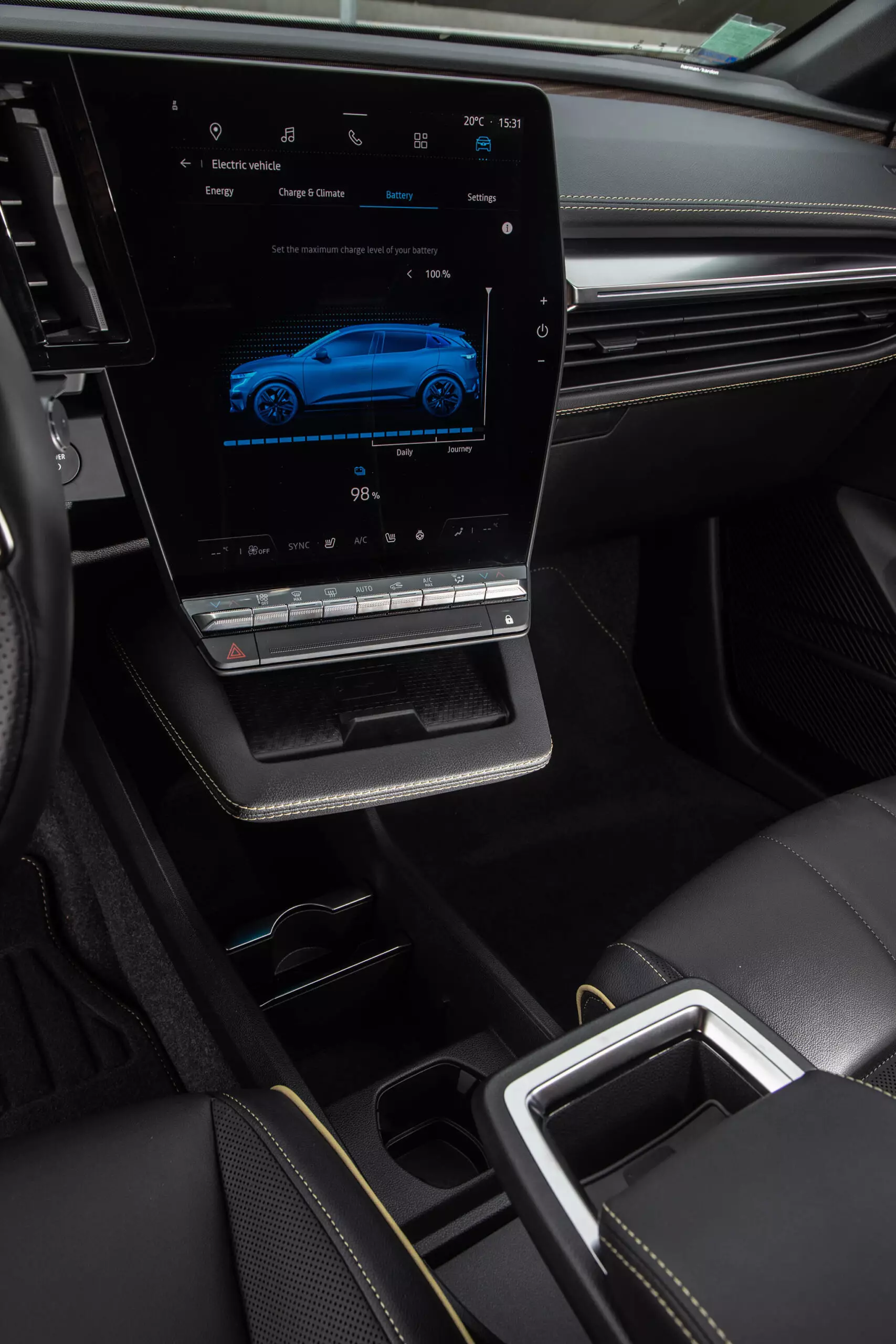
This also results in one of the best vocal comprehension skills we've ever experienced (alongside the new Volvos, which were the first to embrace this solution). And the system is fully compatible with Apple devices, connected with or without a cable.
Wide and with a big suitcase, but narrow
As has been common to see in electric cars, hard-touch plastics predominate and the paddles on the steering wheel are cheap-looking plastic, but the dashboard is less minimalist than that of its direct competitor Volkswagen ID.3.
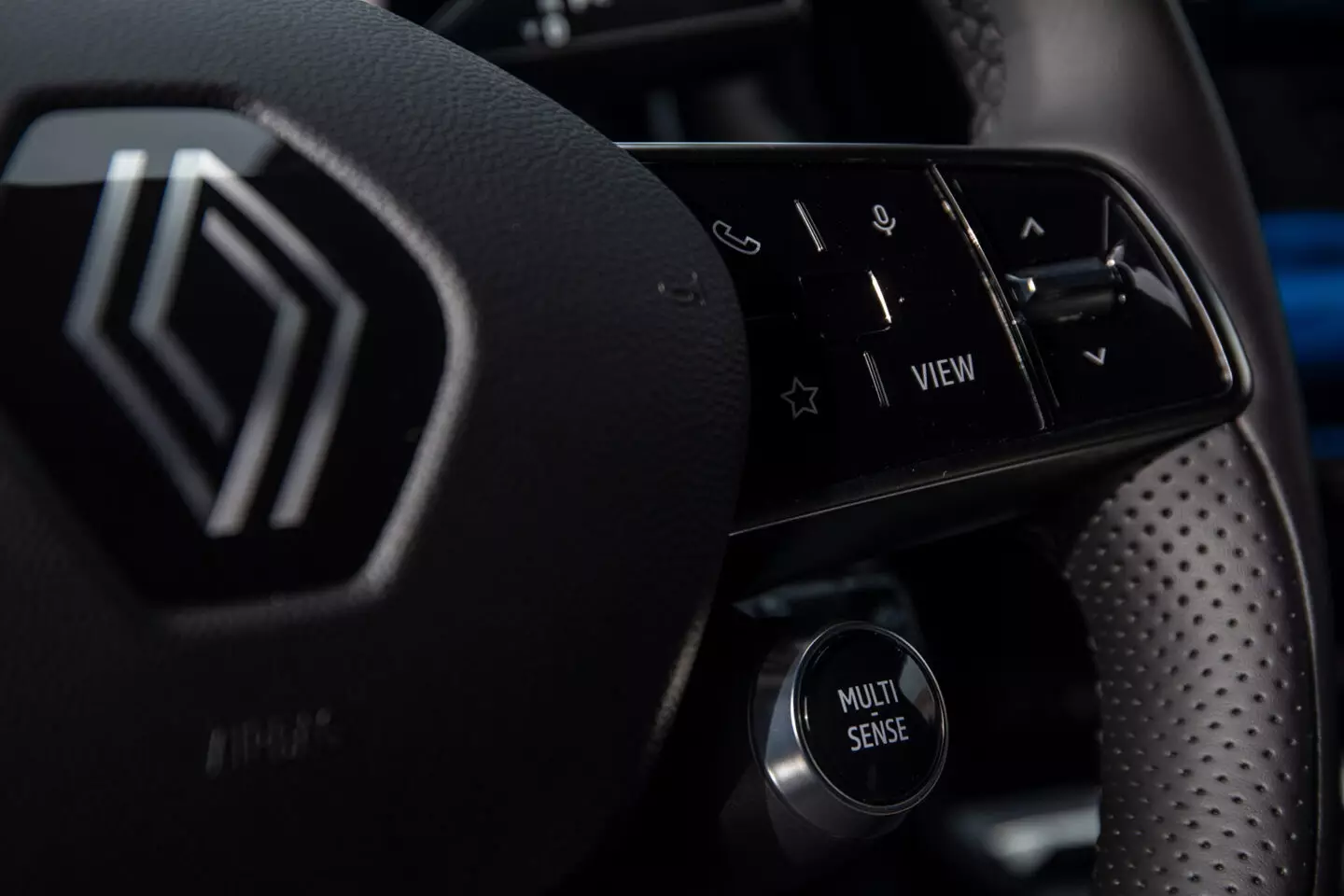
Not only are the screens bigger, but physical controls have been kept here for the climate control and for other functions that should be accessed more directly than by searching through menus.
The dashboard is covered with a textile finish at the initial and intermediate equipment levels, while the top of the range features a synthetic leather, in addition to combining a fine real wood veneer glued to a cotton textile support.
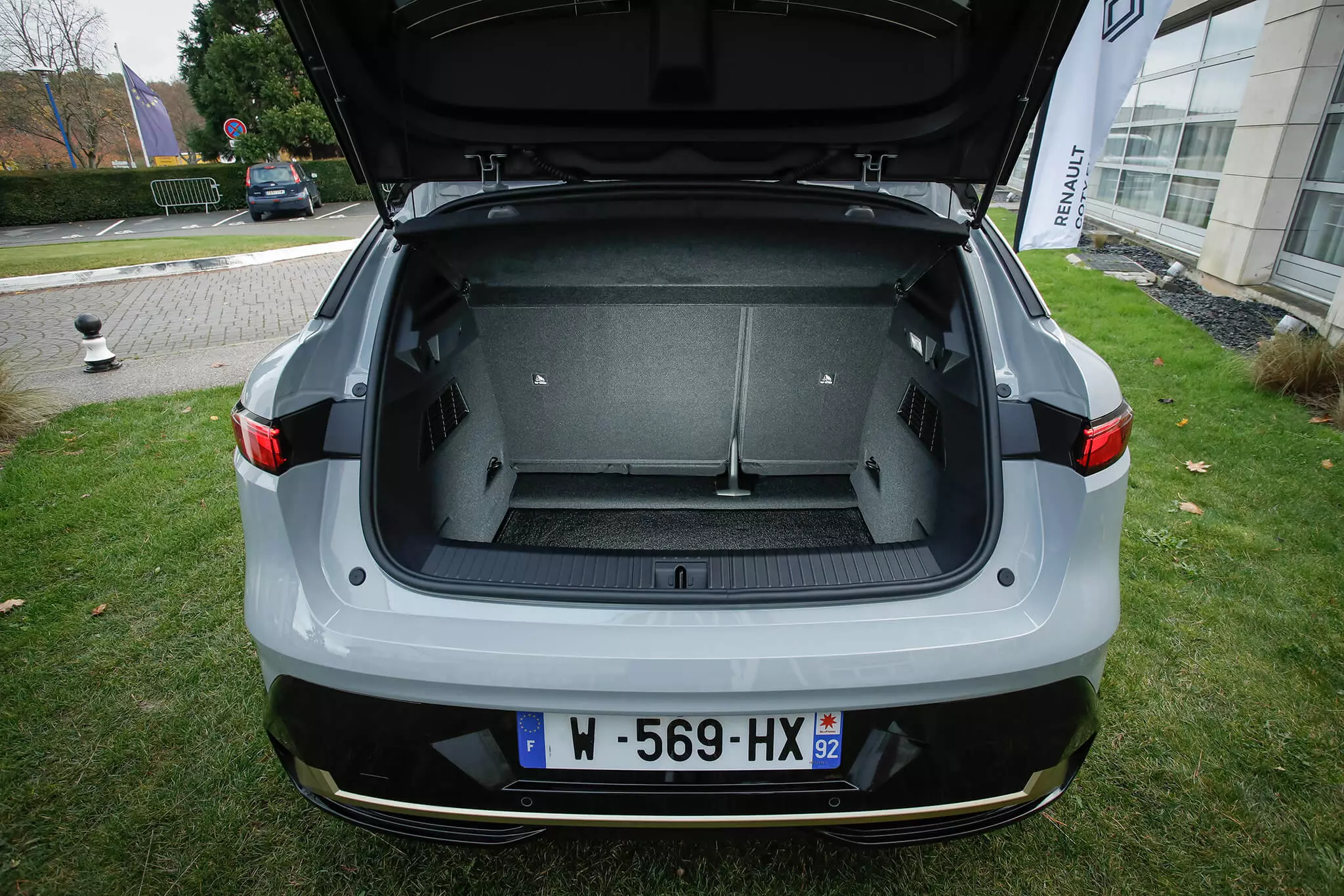
The trunk of the new Renault Mégane is one of the largest in its class: 440 l, with 22 l more under the floor for storing cables, against 384 l of the previous Mégane and also larger than that of the Volkswagen ID.3.
But the luggage compartment is so deep that it can be difficult to load and unload heavier volumes, and there is no standard tray with a variable height that makes it easier to use (in addition to allowing you to create a completely flat load floor. when the rear seat backs are folded down).
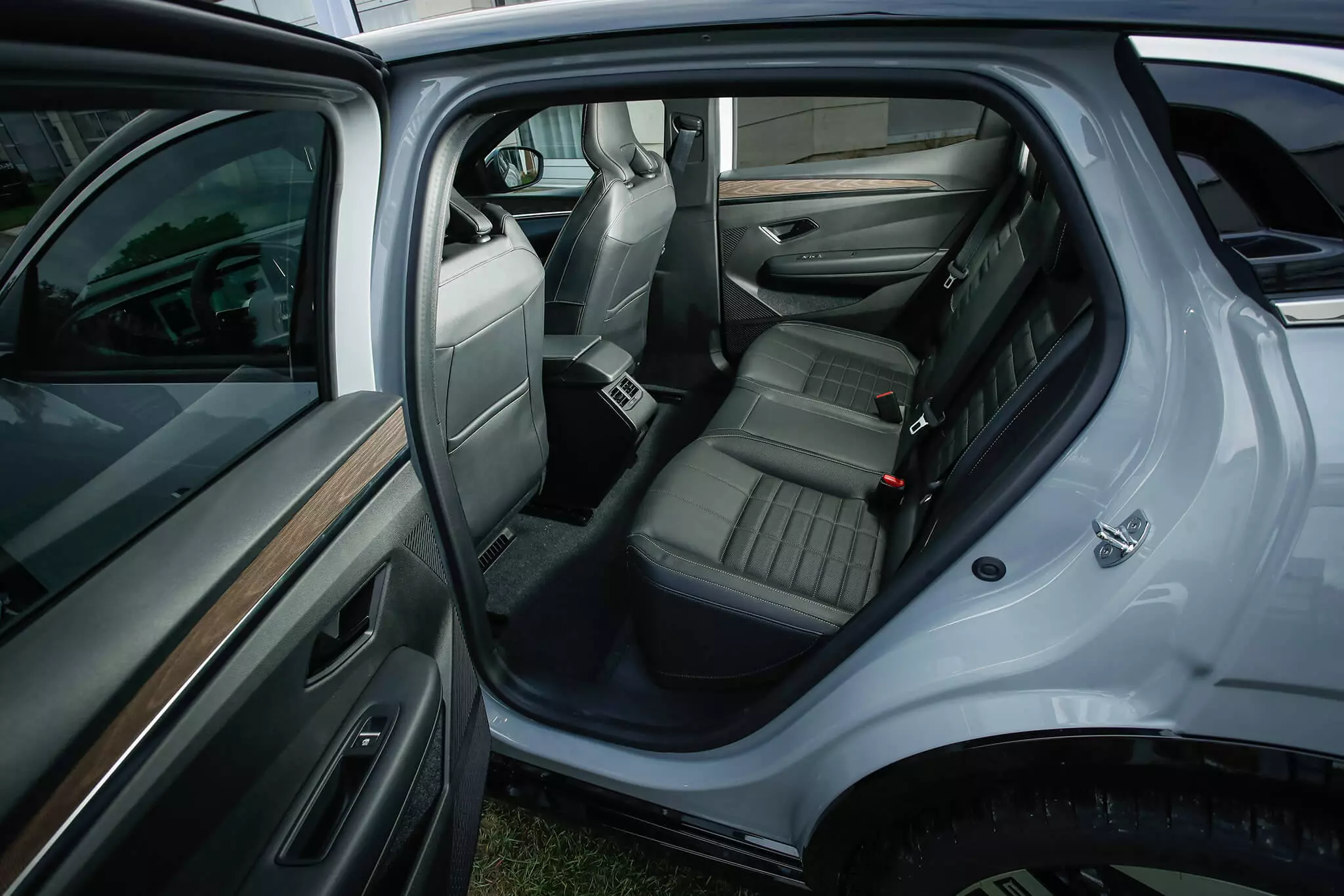
The second row of seats celebrates the absence of any intrusion on the floor (as is normal for trams with a dedicated platform), but the central passenger travels tighter than he would like if he has company on both sides (the habitable width is not a strong point).
Better in height (courtesy of the roofline that doesn't fall over the rear of the body), even for six-foot-tall occupants. And if it's true that the feet sit in an elevated position — because underneath our feet is the battery, even though it's only 11 cm thick and a few centimeters more for the liquid-cooling system — it's not to the point of cause too much discomfort.
Unfortunately there is no space to slide your feet under the front seats which, along with the lower than expected leg length (only 2 cm more than in the previous Mégane and less generous than in the ID.3), hinders the final assessment of habitability.
Platform to debut
The new CMF-EV platform starts, as the name implies, from the CMF, which is at the base of several combustion-engined cars of the Renault Group, but only in the front structure and suspension elements.
From then onwards, everything is new, to the point where it can be considered a “dedicated” electric platform (integrating the box where the battery is housed, which helps to increase the rigidity of the chassis).
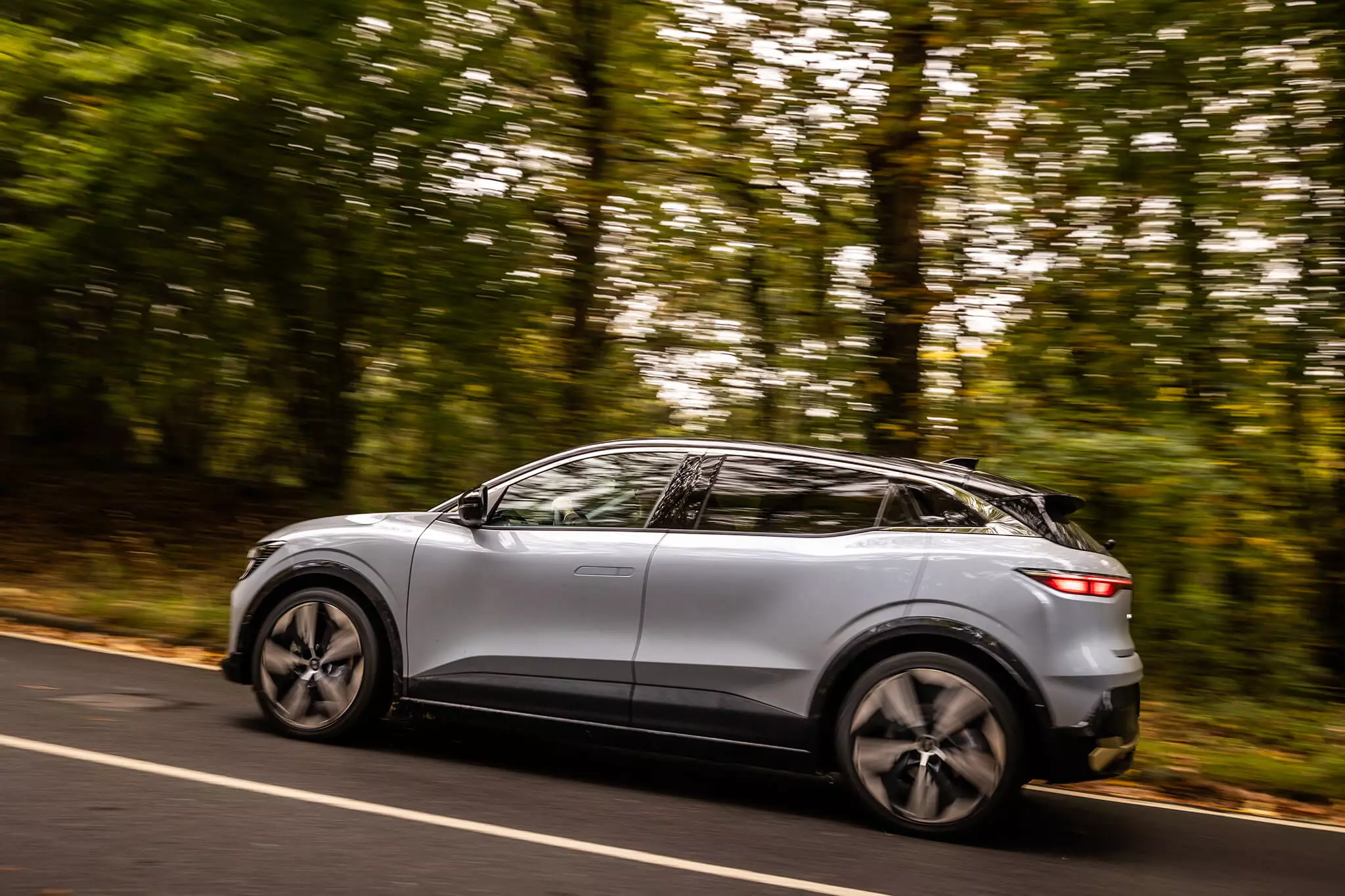
The energy density of lithium-ion batteries (made by LG) has increased 20% compared to the Zoe and the engine itself (plus transmission) is 10% lighter (16 kg less, settling at 145 kg) and 20 % smaller than in the electric city, in addition to being more powerful.
It is of the permanent synchronous type, but instead of magnets, it has coils through which the current passes (thus creating an electromagnet), with the advantage of avoiding the use of rare earths, which are also less harmful to the environment.
It would be difficult to put a semi-rigid axle on the rear axle with the battery, so the rear suspension is multi-arm independent, which will also facilitate the installation of a rear electric motor when it is necessary to make 4×4 versions. If not on the Renault Mégane E-Tech Electric, at least on other models that use this same technical base, such as the Nissan Ariya.
Sports q.b., but valences to be confirmed
In this first dynamic experiment I was able to guide the version with the larger (60 kWh, but there is a 40 kWh) and more powerful battery (160 kW or 218 hp and 350 Nm, the one with less efficiency has 96 kW or 130 hp and 250 Nm) .
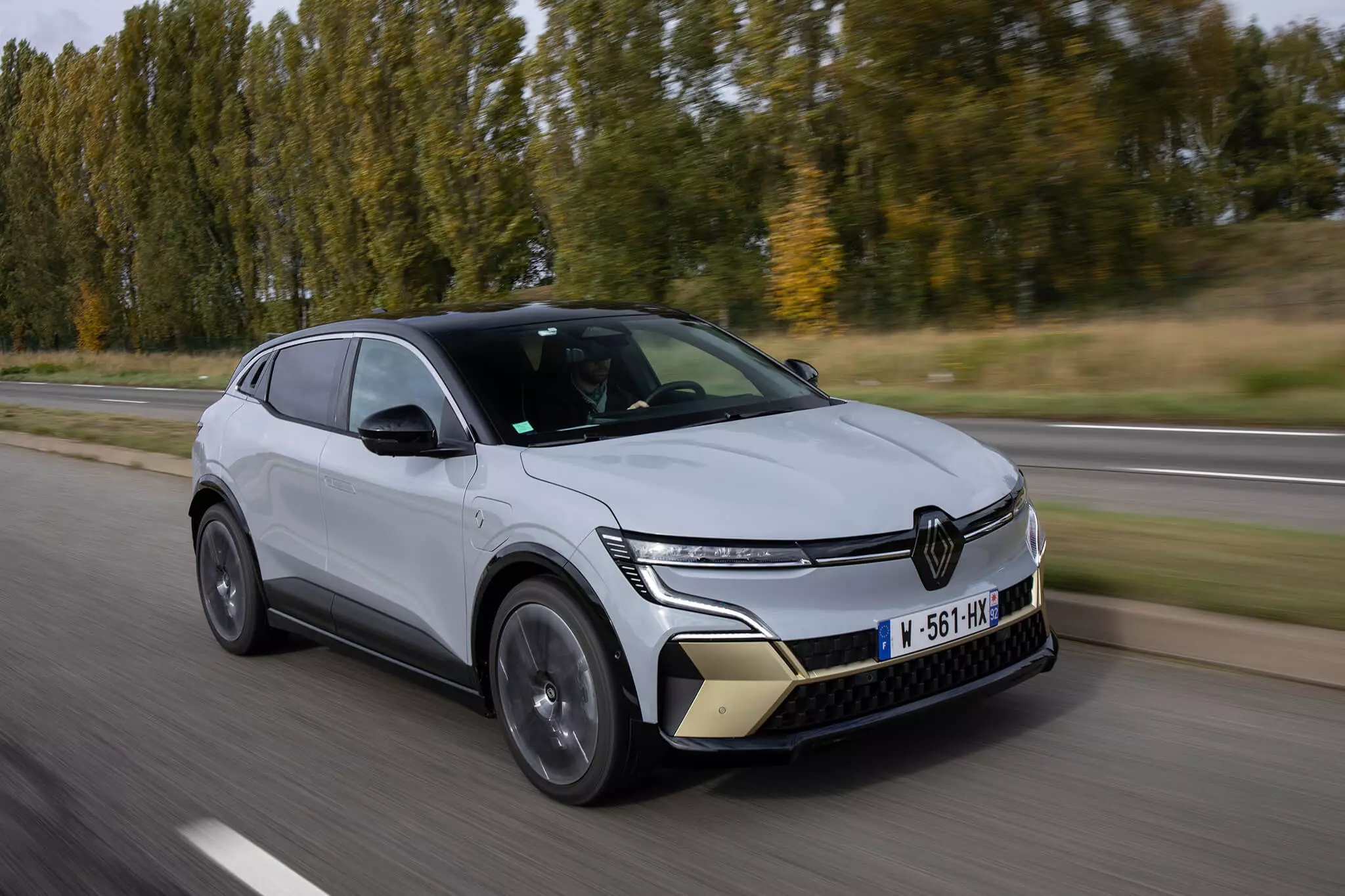
Weighing 1624 kg — 170 kg less than an ID.3 with a comparable battery, thanks to solutions like the use of aluminum in the doors and the higher energy density of the batteries — this EV60 version gains in dynamism, being able to shoot up to 100 km/h in 7.4s (faster than any Mégane other than RS), as well as ensuring good speed recovery. But similar to those of the aforementioned German rival.
The steering is very light and filtered, resulting in less “information” passing into the driver's hands than would be desirable. Its tiny gear ratio — 12:1 — and a minimum of two laps at the wheel from top to top are more common in a car with a sportier vocation, as the French like to present this Mégane.
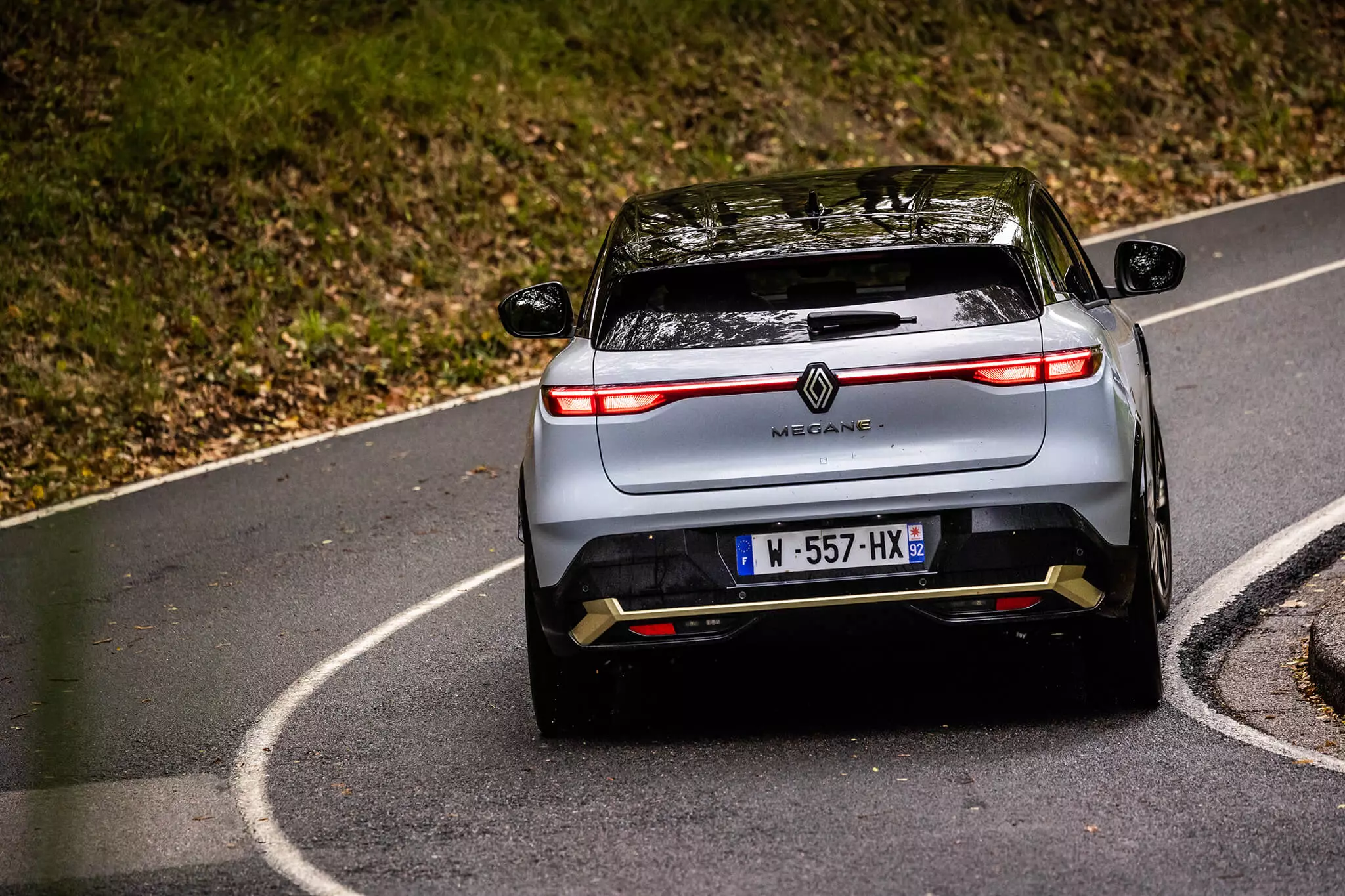
The fact that it has a center of gravity 9.0 cm lower than the previous Mégane more than makes up for the increased height (leaving the car very well “planted” on the road) and that it has an almost equitable mass distribution between the front and rear (something never seen in a Renault series production car) translates into obvious benefits for road holding.
There is a reduced tendency for the bodywork to adorn in curves and also a reasonably incisive front, although this assessment was hampered by the combination of more than 300 Nm delivered from a seat (as always in electric cars) to the front wheels and the wet pavement on the roads outside Paris.
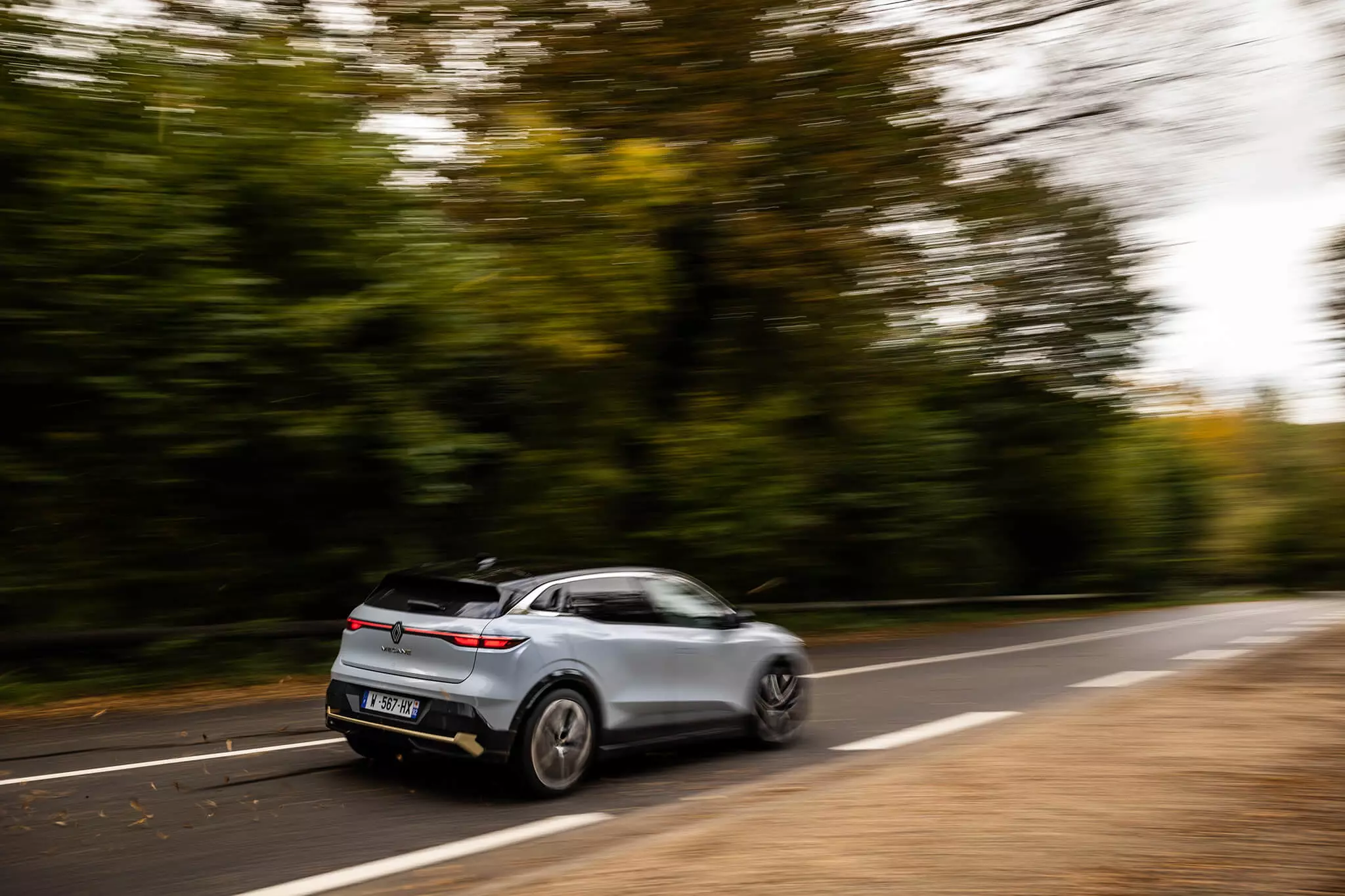
The damping tends to be dry, perhaps too much, but it is something that can be mitigated by choosing the smaller 18” wheels (the test unit was paved with the larger 20” ones, which penalize more comfort).
Good grade for rolling silence (insulation foams around the batteries worked well), less good for aerodynamic noise at still legal speeds on motorways and new approval for brake response (power and transition from regenerative to initial braking hydraulic final stage).
How far does it go?
Behind the steering wheel we have paddles to vary the energy regeneration capacity by decelerating in four levels, but not even the strongest one should be considered as One Pedal Drive (only driving with the accelerator), because the Mégane E-Tech Electric never stops completely when we release the accelerator pedal.
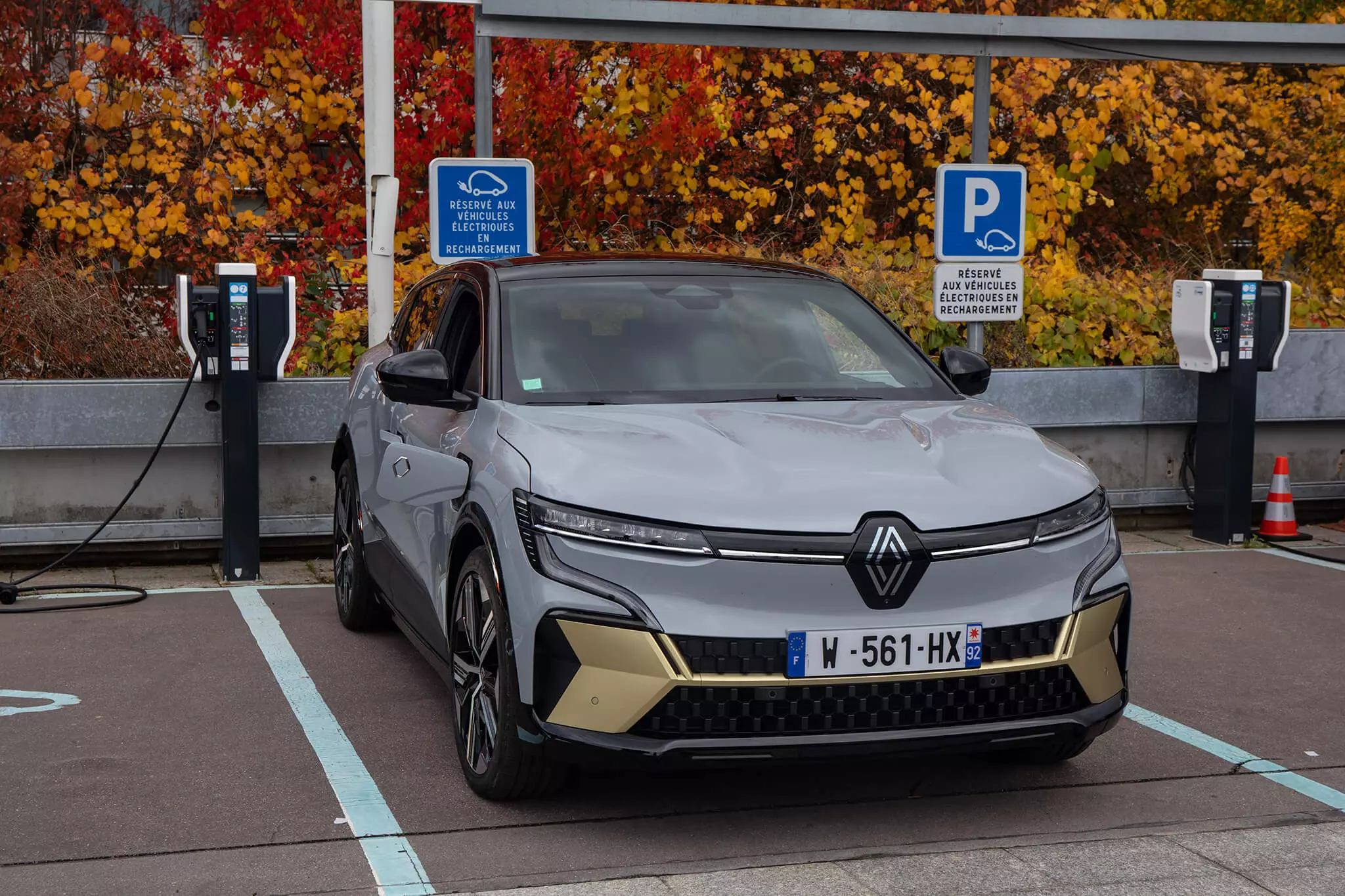
In any case, the test route barely passed through urban areas with traffic density, which turned out to be reflected in an average consumption higher than that announced in the WLTP approval cycle (18.9 kWh/100 km instead of 15.5 kWh/100 km).
At these rates, the 470 km of autonomy promised by the EV60 version (300 km in the case of the EV40) could not be replicated, but it will be fair to carry out a more conclusive test, on mixed roads and at speeds closer to those that the end user will do before «crucifying the appetite» of the Mégane E-Tech Electric EV60.
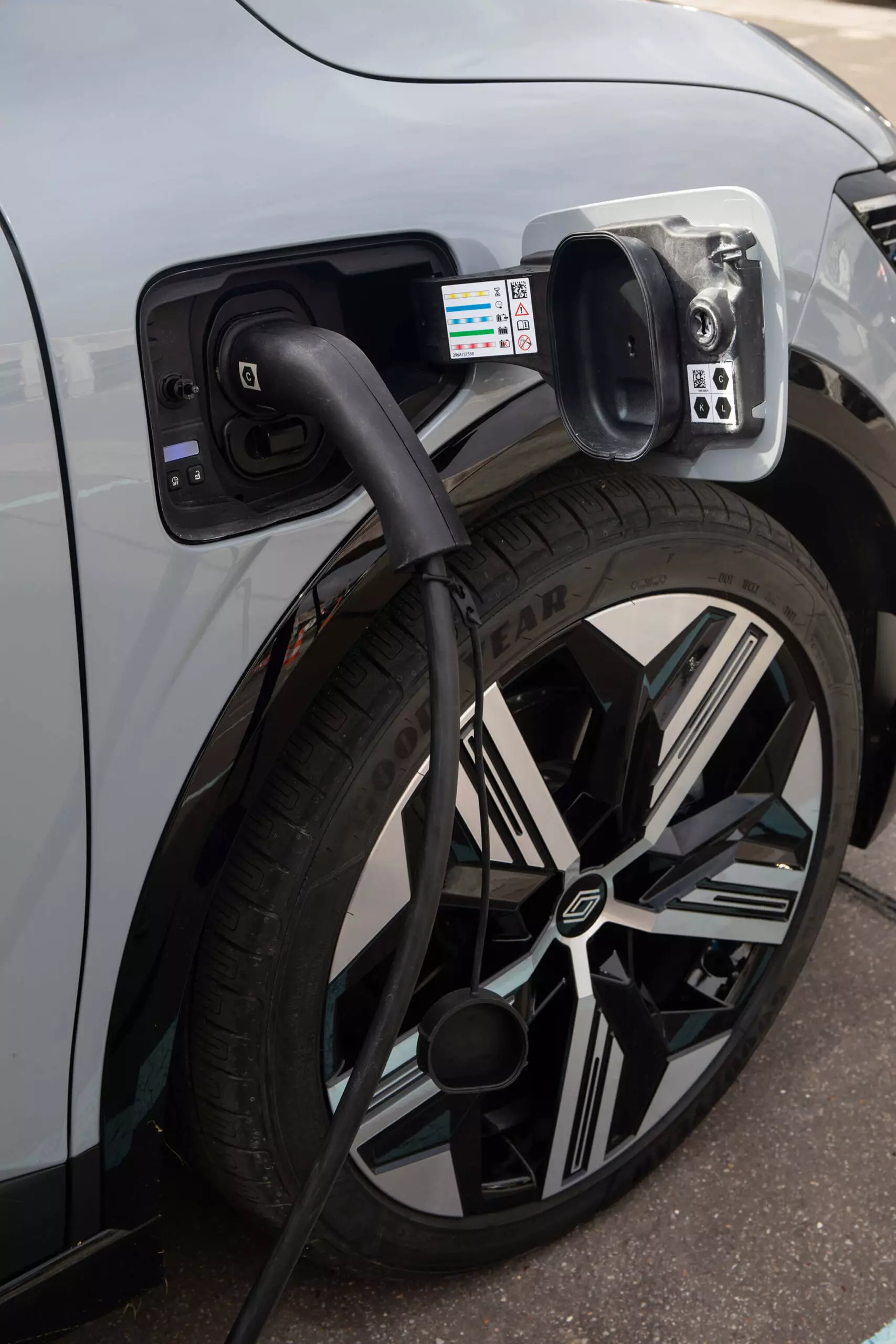
The EV60 allows up to 130 kW of direct current (DC) and alternating current (AC) at 7 kW and 22 kW. It will take 31 hours (2.3 kW, household outlet), 19 hours (3.7 kW, wallbox), 5h15min (11kW), 2h30min (22kW) and 33min (130 kW) for a load of 10% to 80% .
The battery has an eight-year factory warranty (for 70% of its energy content). The EV40 version will charge at 7 kW (AC), 22 kW (AC) and 85 kW (DC).
Technical specifications
| Renault Mégane E-Tech Electric EV60 | |
|---|---|
| ELECTRIC MOTOR | |
| Position | Front |
| power | Total: 160 kW (218 hp) |
| Binary | 300Nm |
| DRUMS | |
| Type | lithium ions |
| Capacity | 60 kWh |
| STREAMING | |
| Traction | Forward |
| Gear box | Gearbox with a ratio |
| CHASSIS | |
| Suspension | FR: Independent MacPherson; TR: Independent Multiarm |
| brakes | FR: Ventilated discs; TR: Disks |
| Direction/Diameter Turning | Electrical assistance; N.D. |
| Number of turns behind the wheel | 2.1 |
| DIMENSIONS AND CAPACITIES | |
| Comp. x Width x Alt. | 4.21 m x 1.78 m x 1.50 m |
| Between axles | 2.70 m |
| trunk | 440 l |
| Pasta | 1624 kg |
| Wheels | 215/45 R20 |
| BENEFITS, CONSUMPTION, EMISSIONS | |
| Maximum speed | 160 km/h |
| 0-100 km/h | 7.4s |
| Combined consumption | 15.5 kWh/100 km |
| Autonomy | 419 km |
| Combined CO2 emissions | 0 g/km |
| Loading | |
| DC maximum charge power | 130 kW |
| AC maximum charge power | 22 kW |
| charge times | 10-80%, 11 kW (AC): 5h15min; 10-80%, 22 kW (AC): 2h30min; 10-80%, 130 kW (DC): 33min. |
The price of 45 000 euros is estimated. The most affordable version, with a 40 kWh battery, will have an estimated entry price of 38 000 euros.
